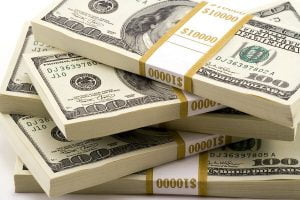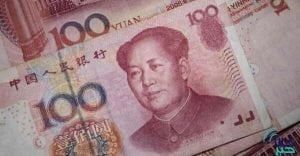Themes in Afshar Weaving – An Exhibition at Adraskand
Over the years I have had a number of occasions to review exhibitions at the Adraskand Gallery, now moved from Point Reyes to San Anselmo in California’s Marin County, and have never come away disappointed.
The focus of these shows has always been on those aspects of Oriental rugs I might describe as “artistic quality,” in which vibrant color, excellence of design, and rarity are often given greater attention than mere condition. This is not to say that the rugs are generally past their prime, but Adraskand is one of the rare galleries that will accord respect to a worn rug if it is in other ways superior. In addition the pieces
on display are treated to a kind of creative labeling that I have found more stimulating than annoying, although I am often in disagreement with the exact attributions.
The show, “Themes in Afshar Weaving,” which opened November 28, 1987, and runs through March 26, 1988, certainly met these expectations, in addition to providing a rare opportunity for examining a wide variety of Afshar weaves under one roof. It was perhaps seeing them all together that prompted me again to speculate on the origins of their designs, as the group shows the tendency, so pervasive among so-called nomadic rugs, to depend upon urban sources for the designs.

Figure 1. A finely woven (284 knots per square inch) Afshar rug with a repeating boteh design. |
| The type most obviously derived from city rugs is the medallion and corner design, well illustrated by two examples in the show. Here we not only see a stiffly rendered central medallion with stiff, stylized flowers, but we also see pendants on each end of the medallion that here, as on many city rugs, are drawn as a vase and flowers. The corner figures still bear an obvious relationship to their prototypes, they even show crude vestiges of arabesques. It is not surprising to find such rural adaptations of the medallion design from the region near Kerman, where most Afshars live. That city has produced so many thousand | medallion rugs over the decades that we would well expect to see that format also used in the surrounding countryside. The boteh, which entered the lexicon of rug designs almost certainly from the Kashmir shawl, occupies the field of some of the finest Afshar rugs, including two excellent specimens in the exhibit and a number of the saddlebags. (Figure 1) Perhaps because of the intricate detail within the figures themselves, these are often the most finely woven Afshars. In addition to boteh rugs themselves, there are also many with repeating boteh-like figures that seem to represent other forms of stylized clusters of flowers. |

Figure 2. .Nomad Rug from Kerman area, 19th century, 4′ 1″ x 5′ 6″ |
Perhaps next most common are the designs with repeating hexagonal panels, in which the field varies in color. The origin of this design is still contested, but I have always seen it as a variant of the Mina Khani, which in turn has descended from the 17th century vase carpets of Kerman. A particularly attractive example in which alternate hexagons maintain the same field color was in the exhibit (Figure 3.). | Another set of Afshar rugs seems to represent simplified adaptations of such designs as the Harshang, with various shapes of palmettes and leaf figures. Figure 2, a splendidly colored piece with an ivory field, well exemplifies this type with shield-like devices that are almost certainly heavily geometrized palmettes. |

Figure 3. Afshar rug with multi-colored panels |
| The intriguing element in all this is that all of these designs, and others, are derived from outside sources, and there is little, if anything, we could describe as indigenous to the Afshars themselves. Even their bagfaces (and a number of excellent pieces are shown in the exhibit) ordinarily display such derivative designs as the boteh. This is not to criticize the quality of Afshar rugs, as they certainly stand on their own in terms of color, composition, and overall appeal. And yet we might be puzzled as to why nothing specific to this group appears to have survived. Even one of the show’s most unusual pieces is again obviously descended from outside sources. Many surmise that much of what was indigenous to the tribal groups of Fars, such as the Qashqa’i, appears in the so-called Gabeh rug. I cannot say that I know of anything equivalent from the Afshars. | There is another type of rug, usually labeled as Afshar almost absent from the show. Such towns as Rafsinjan and Sirjan, which lie within the territory inhabited by Afshars have at times produced rugs that strongly resemble Afshar tribal rugs, although they are often larger, and they are more likely to show cotton warps. Most of these are asymmetrically knotted, a feature that is less common among the tribal rugs than the symmetrical knot, and many show the same kind of cochineal reds as we see in rugs of nearby Kerman. These town Afshar rugs formerly showed some features like the rural rugs, including kilim ends with plain stripes and at times barber-pole overcasting. Lately they have come to have cotton warps and wefts and undecorated end and edge finishes. |

Kerman Area Village or Nomad Rug, 19th century, 3′ 10″ x 4′ 8″. |
| Among the many interesting pieces in the exhibit are several that would appear from a distance to be pile rugs, but are woven in a soumak technique. There were also several finely constructed horse covers and some charming smaller pieces, including one woven in the long, narrow shape of a Turkoman torba. Of course this leads us to speculate as to whether it was woven for the same purpose as the Turkoman type. While most Afshars currently live in the Kerman province, they were formerly much more scattered throughout Persia, and some still live in Azerbaijan and Khurassan. Identifying rugs woven by Afshars living in these two other areas has presented a challenge to students of the field, and so far no one appears to | have clarified just how such pieces may be distinguished. Figure 2 is labeled as an Afshar from Azerbaijan, although I can see nothing in the colors, borders, or structure that would suggest that it is not part of the same Afshar mainstream that produced the other rugs of the exhibit. Suggesting that some rugs are perhaps from Khurassan on the basis of their use of cochineal seems to ignore the fact that this dye is used predominantly for reds in Kerman rugs, along with those woven in such nearby towns as Ravar and Mahan. Surely cochineal dyed yarns are readily available around Kerman. |

Kerman Area Village or Nomad Rug, 19th century, 3′ 3″ x 3′ 8″ |
| Talk about labels and design origins seems like hairsplitting, however, when we actually confront the rugs themselves, and their strong colors and clear lines remind us again as to just why these pieces are so highly regarded among collectors. The exhibit maintains the high standard of the Adraskand Gallery, and I would advise those who can attend to do so. On January 13, the San Francisco Bay Area Rug Society met at the gallery for | a discussion of these pieces with the collector, Jack Corwin, who assembled most of them. A better way to become familiar with these charming rugs is not likely to appear soon, although I am told that another part of the same collection will be exhibited at a later time and that the whole collection will eventually be published. |
If you want buy carpets from Iran you can contact us for talking about it.
whatsapp: +989129726343
telegram: @omidahmadyani
phone: +989129726343
phone: +982128421193
Email : omid.ahmadyani@Outlook.com




